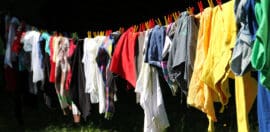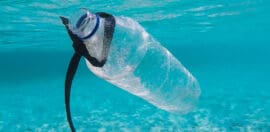Kicking Goals With PARK

PARK in Uganda. Photo: Chelsea Dennison
4 July 2018 at 9:21 am
PARK Social Soccer Co is kicking goals with crowd-sourced funding, writes Wendy Williams in this month’s Spotlight on Social Enterprise.
More than a decade ago Steve Jobs asked his then global creative director Sam Davy a question about Apple doing well by doing good. Due to Jobs’ ill health the idea never came to fruition. But it sowed a seed in Davy.
That seed has now grown into Melbourne-based PARK Social Soccer Co – a sports apparel brand that uses the one-for-one giving model where for every soccer ball or item purchased they give one away to kids in need.
“I didn’t think that I would be sitting at my kitchen table essentially a decade later saying right I’m going to start making footballs, but that was really the beginning of it,” Davy tells Pro Bono Australia.
Davy co-founded the enterprise in 2015 alongside Tara Montoneri, former US general manager for Crumpler.
PARK is based in Melbourne with small offices/distribution hubs in New York and Hull in the UK, and according to its website it is on a mission to become the next global sports apparel brand with a difference.
It aims to close the opportunity gap for disadvantaged kids around the world.
Davy says he essentially came up with an idea to make footballs that were good quality soccer balls, and for every one sold they would pass another one on to kids in need.

“It was kind of a simple thought really,” he says.
“It stemmed from being a father of three kids. I’ve always played soccer, I’ve been interested in social enterprise as a space and also just generally social issues.
“I was like, if I want my kids to actually take notice and learn about these issues in the world I have to put something tangible in front of them, to kind of capture their imagination and their focus for a period of time. And I thought putting a football in front of them will do that.”
After developing the idea, Davy reached out to a number of charities to establish whether there was a need for footballs.
He found there was.
“There’s tons and tons of charities, some of them are purely sport or soccer focused, others aren’t but use soccer as a way of engaging the kids in bigger programs, whether that be educational-based or health-based or housing-based, and essentially for these programs to run, for these soccer teams to run they need balls,” Davy says.
“It’s just a really simple thing. Balls get lost, the balls get punctured, balls wear out, they need balls. And ideally if kids are going to be engaged in sport, the general rule of thumb here when you’re coaching kids is that every kid should have a ball, they can’t really play the game or learn the game or be engaged with with it unless they have a ball at their feet.
“So it sort of stemmed from that.”
There are two sides to the impact they are hoping to achieve.
One is to help disadvantaged kids engage with sport and “reap the benefits of doing that, the inclusion into different sorts of communities and all the benefits from playing community sport and engaging with these programs”.
The other side of the impact is for the advantaged kids.
“For our kids essentially, to start to understand that there is this imbalance of opportunity in the world, amongst their peer group especially, and that they can do something about it,” Davy says.
“Even though they’re kids they can start making decisions about where they spend their money. Increasingly these days kids are making those decisions themselves earlier and earlier on, kids are choosing their clothes at age 5.
“I felt that, seeing my kids start to be influenced by particularly sport brands at an early age, I was like well let’s put a brand there in front of them that has a different message and talk to them about the fact that they can start making their decisions and why that’s important to think about these sorts of things and ultimately I think that is where the big impact lies, in that changing of behaviours, changing of attitudes at an early age. That’s my theory.”
According to Davy, his kids have since gone “PARK mad”.
“I’ve got two boys with a girl sandwiched in the middle, ages 9, 11 and 13. And they love it, they get really fired up about it especially my youngest boy, he comes to the photo shoots with me, he helps out, helps packs the balls and the orders and all that sort of stuff,” Davy says.

While the brand started with balls, it has since branched into clothing, with the product roadmap ultimately including footwear.
“We’d like to, as we start to get a little bit bigger and have a bit more time to kind of spend on R&D, we want to move into the football boot, soccer boot, space and do the same one for one model. So essentially what Tom’s has really done with shoes, doing it in the sport space,” Davy says.
“We feel as though there’s a real need for it. I mean there’s a lot of charities that collect second-hand boots and ship them overseas, which is great, but we feel as though there’s also, getting to that main theory of change of getting the kids thinking about it at that point of purchase, choosing your boots for the new season is a really great moment to think about how another pair of boots is going to another kid at the start of their season.”
For sporting products such as boots, balls, shin pads and gloves, Davy says it makes sense to stick with a one-for-one model. But the aim with the apparel is to donate a percentage of revenue.
“Because essentially it doesn’t necessarily make sense or translate that somebody else is going to need a size 8 T-shirt just because you’ve sold a size 8 T-shirt, “ Davy says.
“What we’re hoping for is that model starts to provide actual funds so that we can then work with the organisations to fund different parts of their programs. They always need money to pay for coaches or to provide a safe place for the kids to actually play, whatever it might be that the kids need to engage fully with sport.”
In a bid to get to that point, Davy is turning to equity crowdfunding.
Following the introduction of crowd-sourced funding legislation in September 2017, and ASIC’s granting of Australian Financial Services licences to seven platforms in January 2018, Australian businesses can now raise funds from the general public.
Last month PARK ran a campaign on Pozible’s sister platform, Birchal, after the brand attracted more than 150 expressions of interest in the EOI stage.
The four-week campaign, which closed on 30 June, raised more than $300,000, with investors able to purchase a stake in PARK from $50 up to a maximum of $100,000.
Davy said the strong interest reflected in the EOI stage demonstrated PARK’s consumer appeal as a movement, not just a brand.
“PARK is the right brand – at the right time, in the right place – to be the leading, for profit, for purpose sport brand for the next generation,” he says.
“For us, the crowd-sourced funding is the beginning of an exciting new phase for the business, and the strong interest we’ve seen through the EOI stage demonstrates it’s now time to engage with our tribe and gather the needed resources to expand the reach and impact of the brand.”
Davy says the fact that PARK was a community brand meant that crowd-sourced funding made sense.
“PARK has kind of been designed for the betterment of communities, so I felt in the early stages that should we ever get to a point where we wanted to raise funds. I thought that the right thing for the brand was to go to the community and get them engaged in it,” Davy says.
“The fact that you can buy 50 shares in the brand for 50 bucks. It’s sort of like from a parents perspective, you can buy a ball, a piece in the brand for under a $100, and that’s a really nice gift for the kids so they can start to follow the journey of the brand, be involved in it, learn about financial literacy and entrepreneurship at the same time.”
After passing their minimum funding target, Davy says they will have “enough funds in the pot” to start pushing the brand forwards and opening up into new markets.
“We have literally just ran it on an oily rag at the moment and relied upon goodwill and word of mouth and stuff like that. I think now we can actually start to be a little bit more strategic about how we push it forwards and it will give us the funds to put into R&D as well for the new product lines,” he says.
He says the potential of crowd-sourced funding for social enterprises is huge.
“I think if you’ve got an idea or a vision that engages people on an emotional level, something that they can really kind of grasp and get around, I think the idea of them actually owning a part of that is really powerful,” Davy says.
“I think once people can get to grips with it’s actually owning real shares in a real business, then it will start to really fly as a model. It just needs more social enterprises to give it a whirl.”
Davy said it is the responsibility of business to be social.
“It just makes total sense to me,” he says.
“I don’t want to create a business that doesn’t leave a positive impact. I don’t really see the point in doing that anymore. There’s a lot of businesses out there. It doesn’t need me to create another one to not create a positive impact.”







